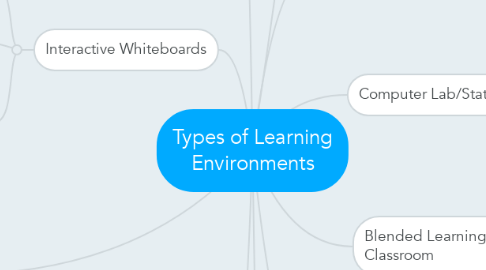
1. One-to-One Computers
1.1. Individual Research & Projects
1.2. iReady, Raz-Kids, ST Math, Typing Agent, Curriculum-based Testing & Reteach
1.3. Self-Paced
1.4. Whole Class, Group, Individual Activities
1.5. Insufficient Bandwidth for Large Number of Computers
2. Interactive Whiteboards
2.1. Student Responders: Real-Time Checks for Understanding/Feedback
2.2. Students More Focused on Screen than Traditional Whiteboard/Overhead
2.3. Learning is More Interactive
2.3.1. Video Clips
2.3.2. Teacher/Student Modeling & Opportunities to Critique Classmates' Reasoning
2.3.3. Images
3. BYOD
3.1. Wide Range of Devices
3.1.1. Challenge to Management
3.1.2. Inexpensive
3.1.3. Exposure to Different Technologies
3.2. Self-Paced Learning
3.3. Income Inequality May Exclude Students/Exacerbate Class Divisions
3.4. Limited Application
4. Cloud Computing
4.1. iReady, ST Math, Raz-Kids, Typing Agent
4.2. Individual Access
4.3. Unable to Save Bookmarks
4.3.1. Time-Wasting, Difficult for Some Students
4.4. Unable to Download Updates (Chrome, Java).
4.4.1. Difficult to do Projects, Screencasting, Etc. when Technology Not Updated
4.5. Unable to Save to Google Drive/Hard Drive
4.5.1. Students Cannot Save Work on Projects without Teacher Using Flash Drive or Emailing to Class Gmail Account
4.6. Insufficient Bandwidth/Internet Down
5. Online Learning
5.1. Asynchronous Learning
5.1.1. Will Teach Time-Budgeting Skills
5.1.2. Can Repeat Lessons as Needed
5.1.2.1. English Learners/Strategic Students May Have Multiple Opportunities to Listen or Watch
5.1.3. Procrastinators May Struggle
5.1.4. May Be Difficult to Ask Questions/Get Feedback
6. One Computer Classroom
6.1. Intervention
6.2. Individual Math Facts Practice
6.3. Teacher-led Instruction with Projector
6.4. Allows Exposure to Technology
6.4.1. Video Clips
6.4.2. Modeling Digital Citizenship
6.4.3. Creation of Flipcharts, Presentations for Instruction
